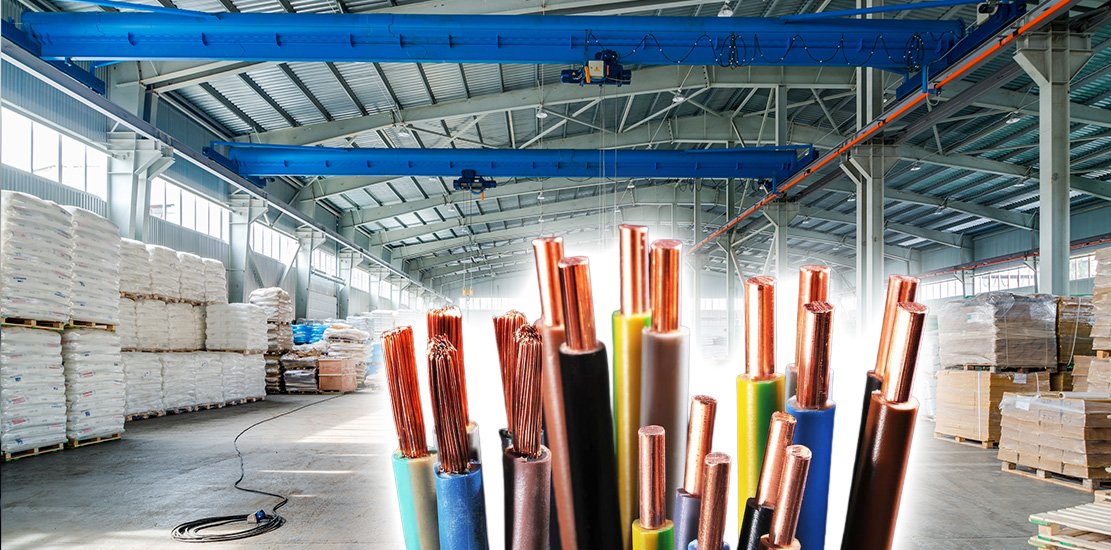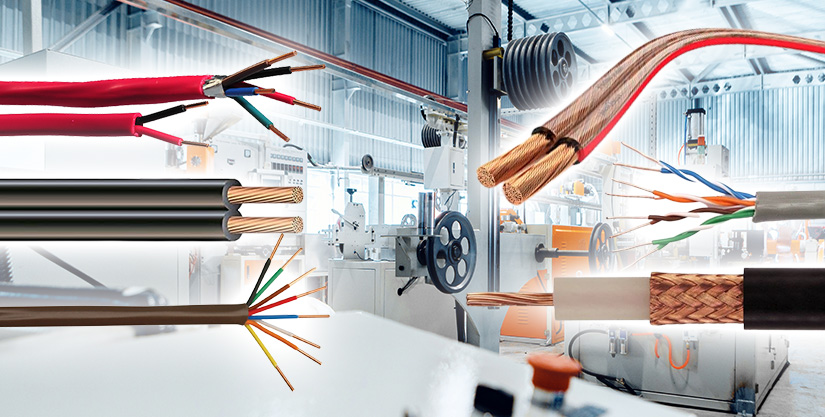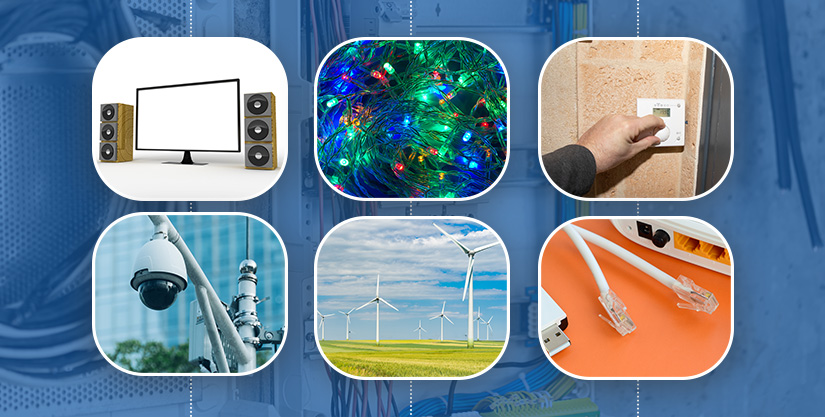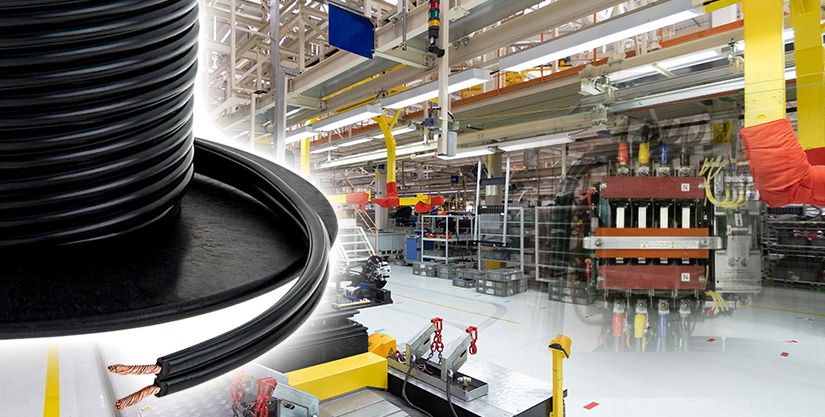
Low Voltage Cables Bringing Safety and Speed to Industrial Applications
The need for an uninterrupted power supply in various industries and the domestic sector is increasing the use of Low-Voltage (LV) cables. LV cables help transfer power to electrical equipment having a small voltage rating.
LV cables get manufactured using solid or stranded aluminum and flexible copper conductors. These cables are halogen-free and fire-resistant, ensuring efficient energy usage, quick data transfer, and seamless operations. Primarily, LV cables get preferred for automation systems, infrastructure, surveillance, sounds, security, etc.
Gloster Cables manufacture LV cables to help meet the increasing demand for power transmission and data communication.
Low Voltage Cables and Their Difference from Regular Voltage Cables
Low-voltage cables are electrical cables that transmit 50V electricity or less. The application of low-voltage cables is for phones, security lines, fire alarms, intercoms, and the internet, where it requires less infrastructure. Different variations of LV cables available in the market are 12V, 24V, 36V, and 48V.
LV cables are easy to install and less dangerous to handle. These cables pose less risk of electrocution and any bodily harm. Therefore, the safety, dependability, and speed with which a company’s activities get carried out depend largely- on the installation of LV cables.
Regular voltage and high-voltage cables usually transmit power, whereas low-voltage cables have limited power applications and are more inclined to transfer data and signal. These cables fundamentally differ from regular cables, as they can transmit 120V, 240V,230V, etc.
We can differentiate an LV cable from regular cables through its appearance. LV cables have markings indicating it as low-voltage and often have stamps on their jacket or sheathing. In most cases, LV cables come on small gauges compared to regular cables. The sheathing, jackets, and insulation of these cables are mostly thinner.
Materials used for Low-Voltage Cables and Types of LV Cables
LV cables can have adjustable or firm structures and get shaped circular, compact, or configured into a specific shape.
Low-voltage cables are aluminum and copper cables, and substances used for insulating and shielding these cables are XLPE, PVC, and elastomer compounds. For additional mechanical protection, steel or aluminum for single-core cables may get applied and provide more mechanical properties.
The selection of appropriate insulation material is crucial for LV cables as it defines the successful operation of cables. Ideally, the required properties for an insulation material should be
XLPE Insulation
XLPE, or cross-linked polyethylene, is suitable for making hydronic tubing, and its 3D molecular bond structure gives it shape memory properties. Low-voltage XLPE cables are crucial in industries where wires and cables get exposed to extremely high temperatures, stress, abrasion, chemicals, water, or electrical applications involving high voltage.
PVC Insulation
PVC insulating material is made of synthetic materials and mixed with plasticizers at a high boiling point, becoming suitable for Low Voltage wire insulation. PVC provides excellent insulating resistance, good dielectric strength, and mechanical durability. PVC-insulated LV cables are inert to oxygen, alkaline, and acids. These cables get commonly used for home lighting and electrical installations due to elasticity.
Types of LV Cables

Different types of low-voltage cable available based on their usage are
 Coaxial Cables
Coaxial Cables
Coaxial cables have a single conductor surrounded by an insulating material and a metal shield. These cables help transmit video or radio signals, protecting RF/EMI interface.
A few types of coaxial cables are Rg6, Rg11, and Rg59.
 Ethernet Twisted Pair Cable
Ethernet Twisted Pair Cable
Twisted pair cable consists of two insulated wires twisted around each other and insulated with plastics.
 LV Alarm Cable
LV Alarm Cable
Low-voltage alarm cables are used for security systems and in power-limited control circuits. These cables are rated 12V.
 Landscape Lighting Cable
Landscape Lighting Cable
Landscape lighting cables are copper cables and are weather-resistant. These cables are suitable for direct burial.
Double strands 12-, 14- and the 16-gauge wire gets used for low-voltage landscape wiring.
 Thermostat Wire
Thermostat Wire
Thermostat wires are multi-conductor copper cables used within thermostats for interconnecting the HVAC system elements. For connecting remotely located HVAC units to wall thermostats, a thin 18-gauge wire in bundles of two is preferable.
 Speaker Wire
Speaker Wire
Speaker wires are low-voltage cables used to translate the audio signal from the amplifiers to the speakers.
Low-voltage cables can get categorized into AC and DC cables based on the types of lines available,
 LV Cables for AC
LV Cables for AC
AC is a safe solution for electrical demands in households and businesses. The periodic changes of direction in the wire cause the current to reverse its route.
 LV Cables for DC
LV Cables for DC
DC carries electricity in a straight line and is preferable for smaller projects.
How does Low Voltage Cables Work and its Application

Power- low voltage cables are used for electrical equipment with a low voltage cable rating of 50V to 1000V for alternating current. And for a direct current of 75V to 1500V, power-low voltage cables help reduce electrical stress.
In a few cases, we need to structure the cabling infrastructure to support low voltage size. And wiring of low-voltage cables requires the knowledge and expertise of qualified technicians for the installation of common-voltage wires in the building.
Low voltage wiring gets preferred for several projects, from infrastructure, automation, lighting, sound, and security, to video surveillance and fire alarm. Industries like Oil and gas, mining, petrochemicals, and utility industries use LV cables to distribute power when the voltage is up to 2Kv. Some of the examples are as follows.
Telephone and Wi-Fi
Telephones are necessary for multi-phone systems and computer networks, and their wiring comprises settings based on fiber optics, Ethernet, or Wi-Fi. Wi-Fi network settings use low-voltage electrical wire.
Video and Audio Devices
There is significant demand for lines in a commercial structure. Many businesses use low-voltage wires for their video and audio equipment. Installation of LV cables is more advantageous and cost-effective for them.
Security and Surveillance
Many businesses and homeowners use security and surveillance system. Low voltage wiring gets installed wherever video cameras, sensors, and alarms are needed. After wiring, the alarm company implements its system into homes or business buildings.
Intercom
The intercom facilitates quick and easy audio and video transmission and can get completed using low-voltage wiring.
Lighting
Low-voltage lighting cables can light up the backyard and highlight certain landscaping elements, such as pathways, trees, plants, etc.
Wind Turbines
LV is used in the nacelle of wind turbines to connect the transformer to the low-voltage generator.
Other Home Applications
Homeowners can utilize LV cables for doorbells, garage doors, thermostats, outdoor lighting, household batteries, etc.
Low-Voltage Wiring Provides a Cost-effective and Safe Power Transmission

The demand for cost-effective and safe low-voltage power transmission across industries and homes is increasing the application of LV cables. Gloster Cables, a leading wire and cable manufacturing industry present for more than two decades, brings ANSI/TIA-569 and ISO/IEC 11801 standard twisted pair and coaxial LV cables. Gloster’s LV cables undergo rigorous testing to ensure their quality and functionality.
CONTACT US